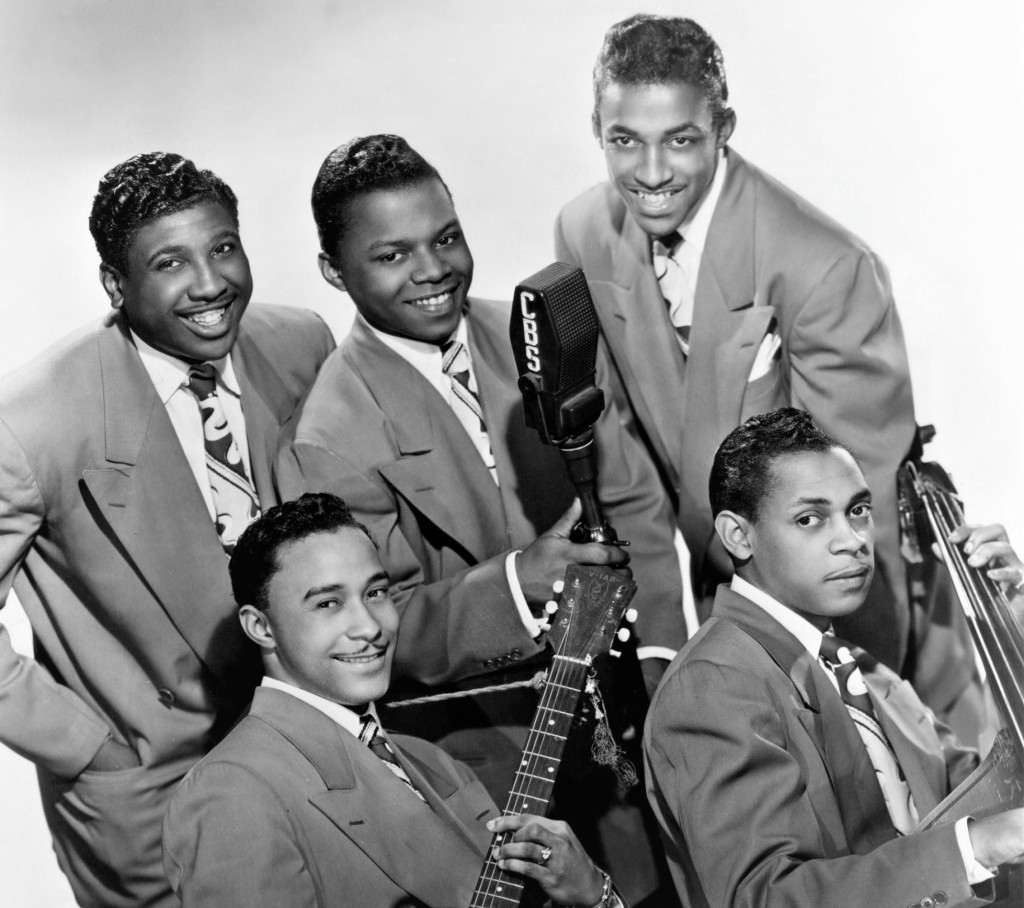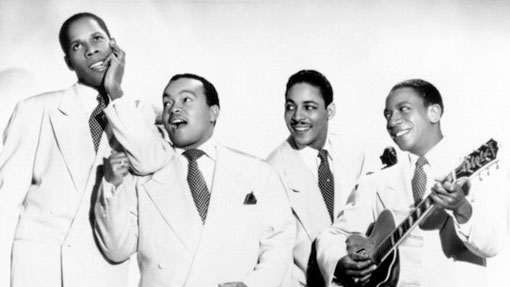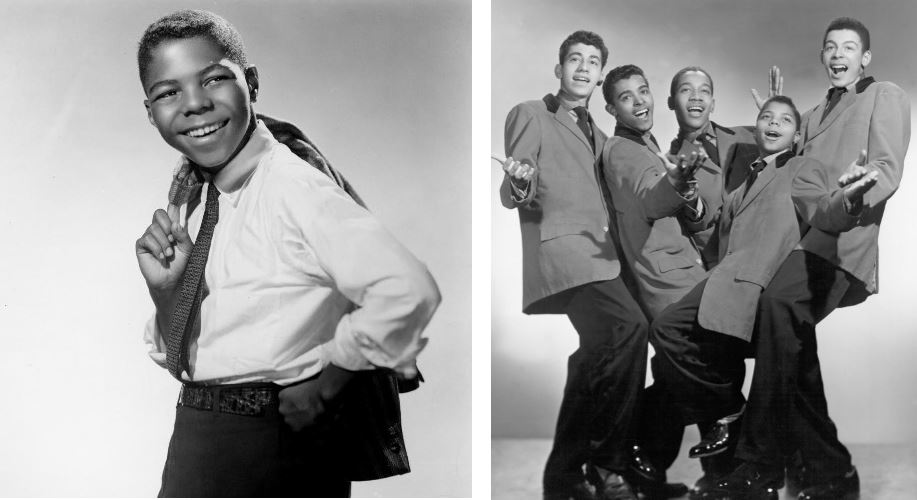The sound of doo-wop music was born out of the creativity of the African American youth who dealt with the impact of segregation during its peak in the late 1940s and 1950s. The development of the music had a great deal of influence on other music genres such as soul, rhythm-and-blues, rock-and-roll, pop, and surf-rock.
Doo-wop music originated in America in the late 1940s. It was in the bigger cities, such as Chicago, Detroit, Los Angeles, and New York, where young African American teenagers would gather to sing in public places.
In the late 1940s and 1950s, American segregation was at its highest point. Young African American musicians were often too poor and could not afford musical instruments. Because of that, they had to be creative. They would meet together, mostly as a group of 4, and start producing sounds by only using a wide range of vocal parts. They would sing a capella and simultaneously generate meaningless onomatopoeiae to imitate musical instruments (e.g. “doo doo-wop” or “do wop de wadda”).
Jazz dominated in America and, most radio stations would broadcast popular swing music. This music was an inspiration for the early form of doo-wop music. In the early stages of doo-wop, no instruments got used. It was in its purest form and, the only sounds were produced by the voice, usually from bass to falsetto.
The Mills Brothers was a band who brought the genre to life. They had a major influence, especially when it came to the use of onomatopoeia, rhythmic punctuation, and multi-layered harmonies. The songs were slow and jazzy, and they had a spiritual influence. The lyrics were quite ordinary, usually about love and addressed to a beloved.
Another doo-wop group with an important influence on the genre was Sonny Til And The Orioles. They were the first to gain nationwide fame. Bandleader, Sonny Til, was even considered a rock star and, he was loved and adored by the audience. The group named themselves after the Baltimore Oriole, the official state bird of Maryland. Using a bird in the naming became a trend among doo-wop groups. Examples of this are The Ravens, The Penguins, The Flamingos, The Crows, and The O’Jays.

The term “doo-wop” was not used until the early 1960s. In 1961, an article appeared in The Chicago Defender calling the music style doo-wop. The author may have gotten his inspiration from previous hits in the genre. “Doo-wop” itself is a meaningless expression that was initially recorded in 1945 by The Delta Rhythm Boys. In their song ‘Just A-Sittin’ And A-Rockin’, you can hear it in the backing vocals. Almost a decade later, in 1954, it was recorded again by The Rainbows. They used the phrase “do wop de wadda” in their successful hit ‘Mary Lee‘.
Although, many music experts agree that the first group to intentionally use the wording “doo-wop” were The Turbans. In their recording of ‘When You Dance‘ (1955) the wording “doo-wop” is more clearly present as it was used in the refrain. I do, however, also need to mention that there are indications that “doo-wop” was already used to archive music in the late 1950s but, there is no information available to support this.
In the mid-1950s, early doo-wop music would evolve in the so-called “mid-era doo-wop”. In early doo-wop, the vocals would sometimes get support from a guitar or a single drum. In mid-era doo-wop, instruments start playing a bigger role. We’re starting to hear the double bass, saxophone, piano, and even the electric guitar. In some cases, a full orchestra would be present. Many bands recorded songs before and after 1955. If you compare both recordings, you can hear the difference in the number of musical instruments used.
The doo-wop sound spread nationwide and soon it would also reach white American teenagers. Because the sound of doo-wop music became popular with the white audience in America, mixed-race groups were formed and black and white vocalists would sing harmonically together as equals. The most famous example is The Dell-Vikings. Soon even all-white doo-wop bands, such as The Crew Cuts or Danny & the Juniors, were formed.
It was not only the male vocal groups that came into existence. Starting in 1952, groups as The Platters became widely known. They consist of both male and female singers and so, they brought another vocal dimension to the sound of early-doo-wop music. Strictly female doo-wop groups were unusual in the early 1950s but, halfway through the decade, they started to gain popularity and got recorded. Famous examples are The Hearts, Pattie Labelle & The Bluebells, The Bobbettes, and The Chantels.
A big name that needs mentioning when talking about the history of doo-wop music is Bill Kenny, often referred to as “the Godfather of doo-wop and rhythm-and-blues“. What made him so unique was his high-tenor singing capabilities that had a range spanning over four octaves. He was the lead tenor of The Ink Spots and had a very successful full solo career after leaving the band in 1954. During the late 1950s and 1960s, Kenny would record and perform worldwide. In 1966, he hosted his TV show on CBC called ‘The Bill Kenny Show’.

Maybe the most famous and influential band in doo-wop music history is The Teenagers, led by singer Frankie Lymon. The band is most celebrated for its contribution to the early success of rock-and-roll music. They introduced the world to a new brand of doo-wop music by speeding up the tempo.

The Teenagers got formed at a high school in Manhattan under the name The Coup De Villes. The group changed their name a couple of times (The Ermines and later The Premiers) before they officially changed it to The Teenagers. In 1954 a 12-year-old boy, Frankie Lymon, joined the group. Together they wrote and composed the song ‘Why Do Fools Fall In Love‘. The song became an instant success.
Thanks to Frankie’s success, the group got renamed Frankie Lymon & The Teenagers in 1957. This name change was not well received by some band members what caused Frankie to leave and start recording solo. The Teenagers continued under their original name but with a new lead singer what they came to regret. The band had to hire female singers to replicate the unique high “boy” voice of Frankie Lymon.
Frankie Lymon’s life was short. He passed away when he was 25 from an overdose of heroin.
Doo-wop music evolved into various genres, among them rhythm-and-blues and rock-an-roll. Although, doo-wop music is better categorized as a less instrumental and more vocal version of the genres. It has its unique history and origin. One main difference is the band formation. In doo-wop music, this is most often a quartet, like in a barbershop quartet. And like in gospel music, doo-wop music would use harmonies in a slow and medium tempo. The lead voice would sing higher than the other band members and interacts with them by leveling out the vocals.
Doo-wop music peaked in 1962 and became dominated by rock-and-roll music and a phenomenon that is known in music history as ‘The British Invasion’. Bands as The Beatles, The Rolling Stones, and The Animals became very popular with the American youth but, there is no doubt that doo-wop music had a great deal of influence on their music style and way of performing.
Related articles:
Frankie Lymon & The Early Success of Rock-and-roll
One of the most famous and influential bands in doo-wop music history is The Teenagers, with Frankie Lymon as the lead singer. The five kids from Washington Heights are most celebrated for their contribution to the…
Work with Me, Annie
“Don’t be ‘shamed”, “Call my name”, “Oh, our hot lips kissing, Girl, I’ll beg mercy, Oh, hugging and more teasing, Don’t want no freezing” are fragments of the original song lyrics. Although the title ‘Work…



